
Chaco golden knee tarantula (Grammostola aureostriata)
May 14, 2021 Chaco golden knee tarantulas (Grammostola pulchripes) are 7-8" diameter, terrestrial tarantulas native to Paraguay and Argentina. They prefer to live in grasslands with a climate of dry winters and wet summers. Chaco golden knee tarantulas are fairly traditional tarantulas in shape.
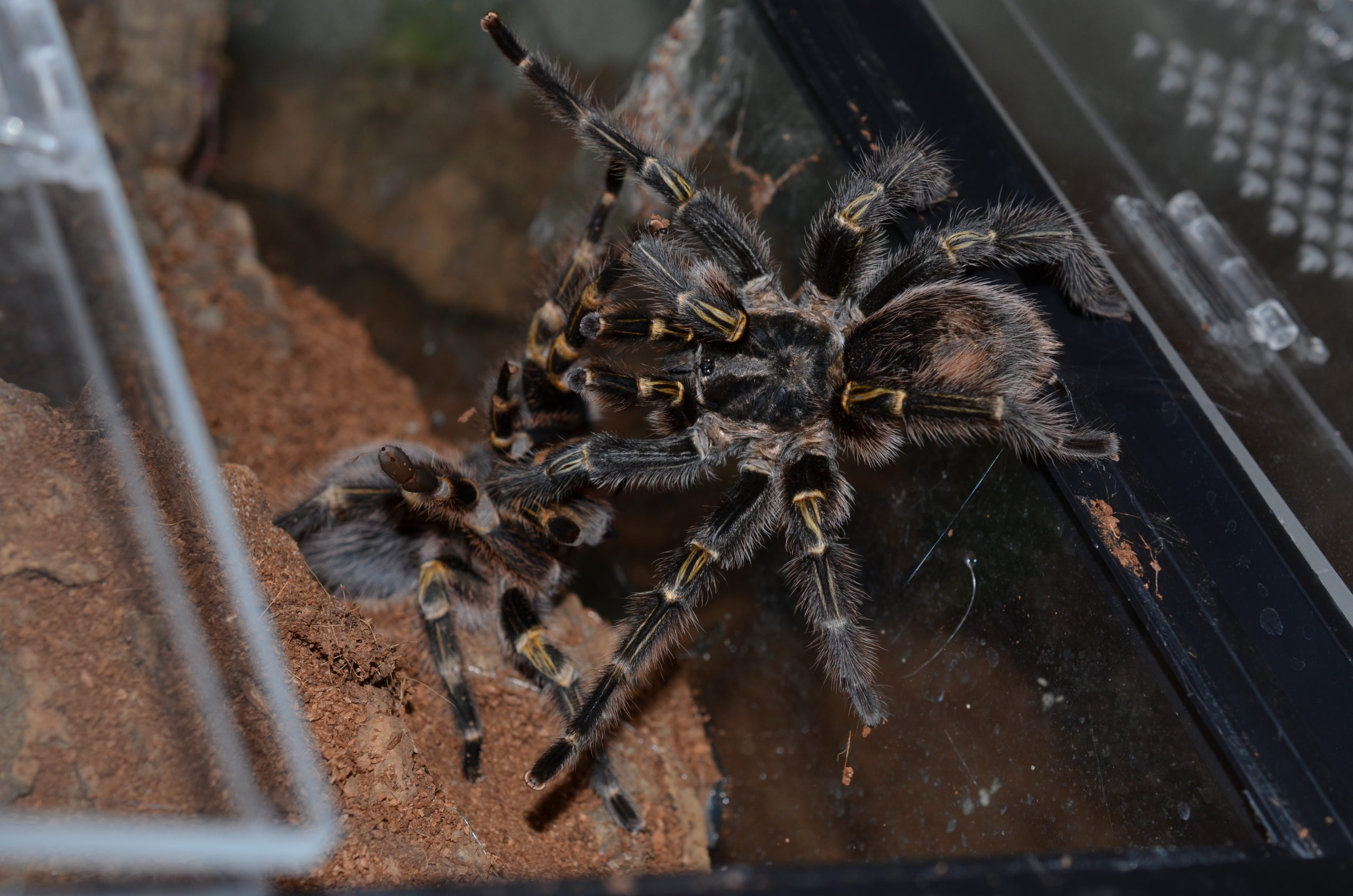
to our new information site! Grammostola pulchripes (Chaco golden knee) Care Sheet
The Chaco golden knee tarantula is a big spider known around the world. The name of this spider comes from Latin words that mean "beautiful foot." Here, you'll find interesting facts about this unique tarantula. Published by Roy Williams on June 21, 2022. Last Updated: November 29, 2023. Verified by: Spider Team Table Of Content hide
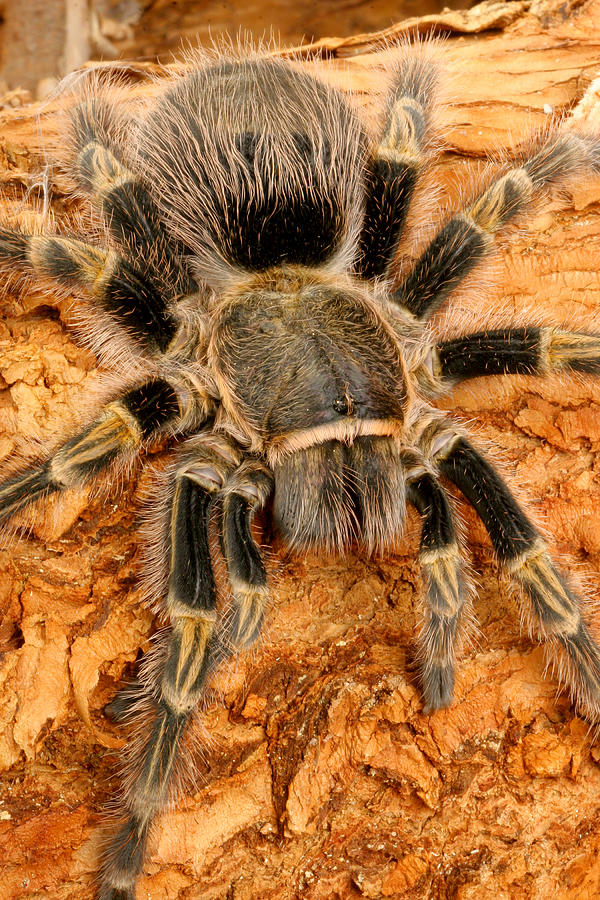
Chaco Golden Knee Tarantula Photograph by John Bell
The chaco golden knee tarantula (Grammostola pulchripes) is a large, terrestrial tarantula found in Paraguay and Argentina. Their preferred habitat is grasslands with dry winters and wet summers. Chaco golden knee tarantulas typically have a 7-8" legspan as adults. They have a brown-black base color, with pale joints and golden stripes on their "knee" segments. They are fairly fuzzy.
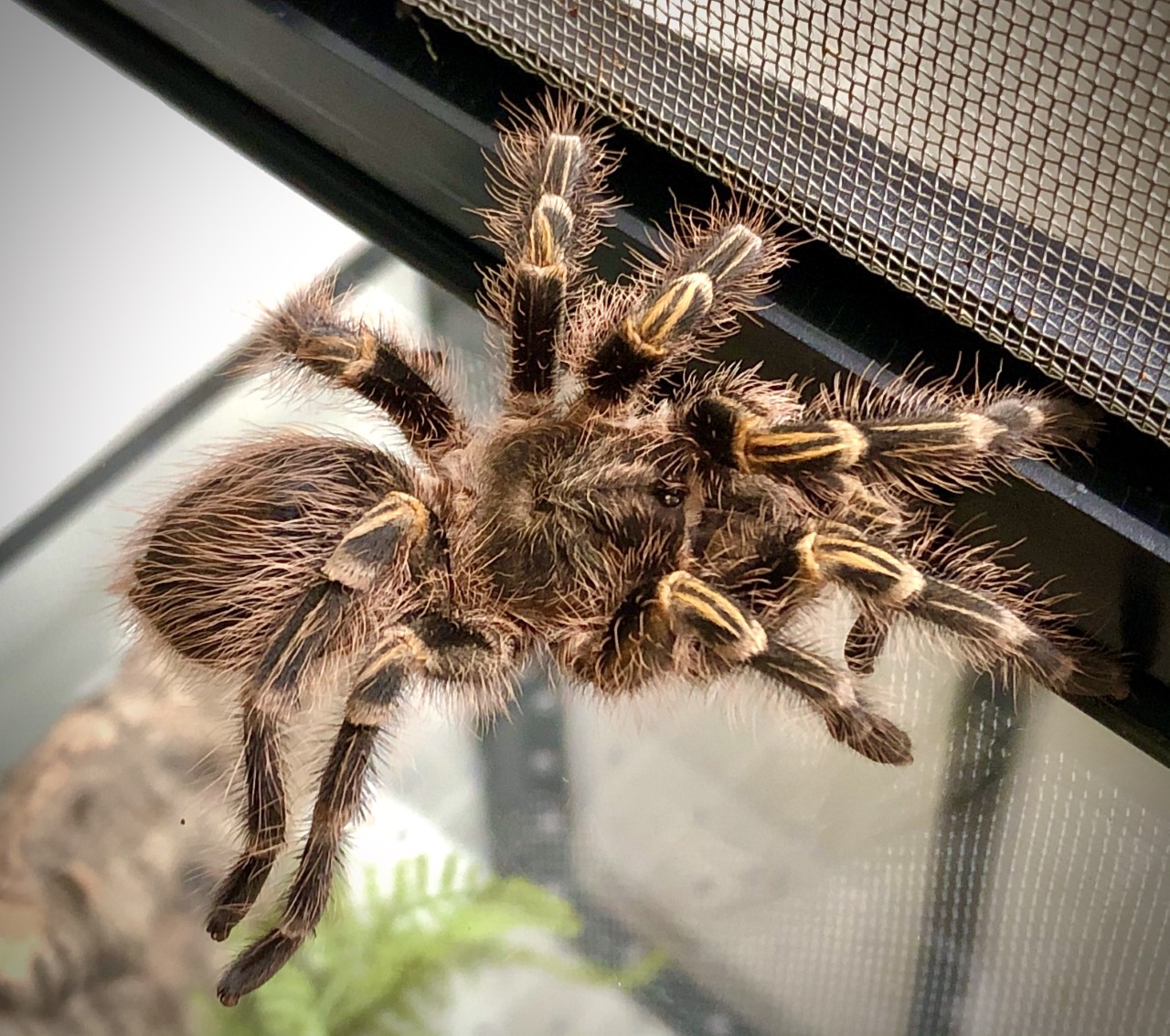
Grammostola pulchripes (Chaco golden knee) (45cm) The Praying Mantis
Last updated: Sep 22 2023 The Chaco Golden is a terrestrial tarantula that is native to Paraguay. The females of this species live longer than the males, which is largely due to how the species breeds. They take quite a few years to grow, especially compared to other tarantulas.

Chaco Golden Knee Tarantula
The first hint as to their appearance comes from their common name - the Chaco Golden Knee tarantula. The "knees" do indeed possess a rich yellow/orange coloration; almost like honey in many specimens. This is also quite a "fluffy" tarantula in the right light, possessing all manner of different browns and golds when you look closely.
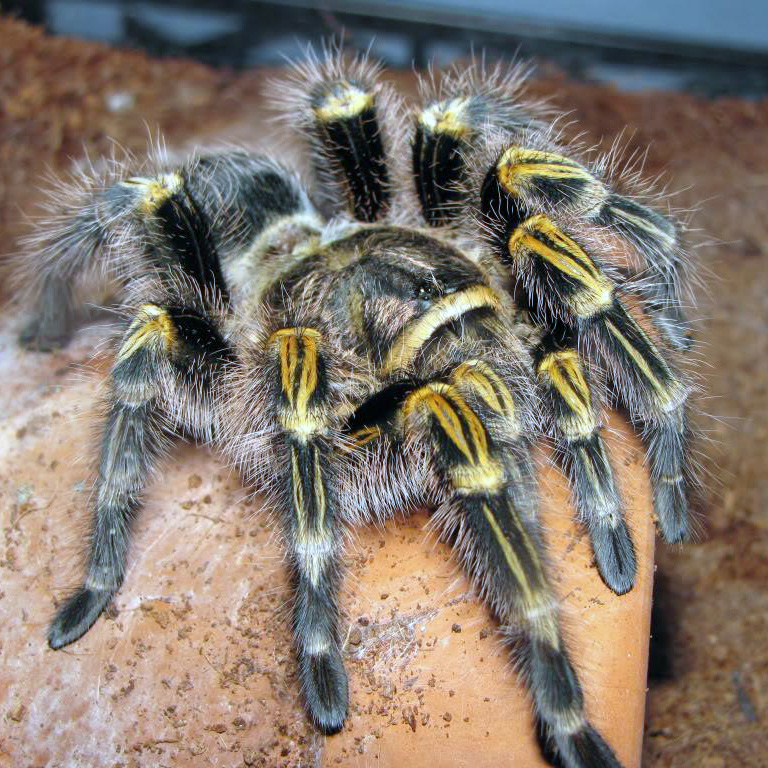
Chaco Golden Knee (Grammostola pulchripes) to Rozzer's Tarantulas, Gecko's & Feeders
The Grammostola pulchripes, also known as Chaco golden knee tarantulas, are present in Argentina and Paraguay. They were first known by the name of Grammostola aureostriata. These animal species have dark black-colored femurs yellowish-colored legs and pink-colored hairs all over their body.

Chaco Golden Knee Tarantula Photograph by John Bell
The Chaco Golden Knee tarantula has a laid back temperament and generally easy to handle, this making it a good choice for beginners. The female of the species generally keeps this gentle temperament, however the male after reaching maturity has the tendency to turn aggressive. Scientific name: Grammostola Pulchripes Distribution: South America
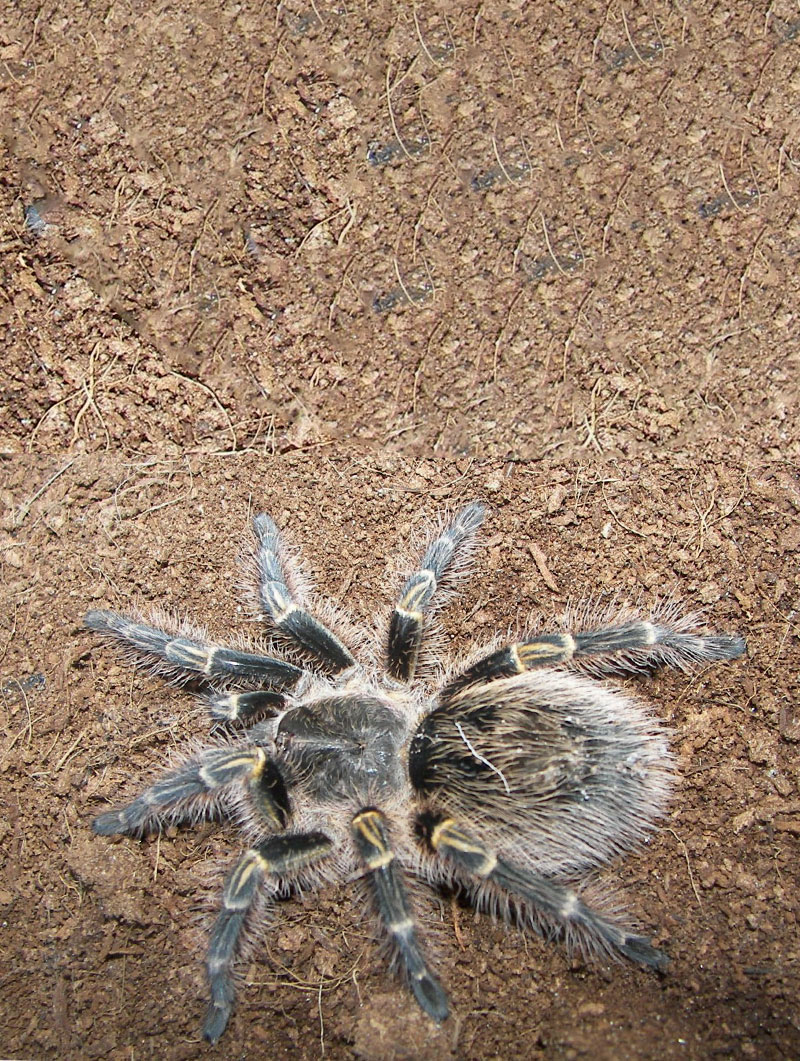
Chaco Golden Knee Tarantula Cosley Zoo
One of the larger species of tarantula, the Chaco golden knee ( Grammostola pulchripes ), formerly known by Grammostola aureostriata, can be expected to reach between 20-22 cm (8.5 in). The Chaco Golden Knee tends to be one of the more docile and calm species of tarantula and therefore makes an attractive first pet.

Chaco Golden Knee Feeding !! STUNNING DETAIL!! YouTube
At first glance, this could pass for a Costa Rican Zebra tarantula, yet the Chaco Golden Knee is home to Paraguay and Argentina. Scientifically classified as Grammostola pulchirpes, it's not too different than its near-identical zebra cousin. This somewhat timid yet easygoing tarantula is not hard to come by at the local pet store.
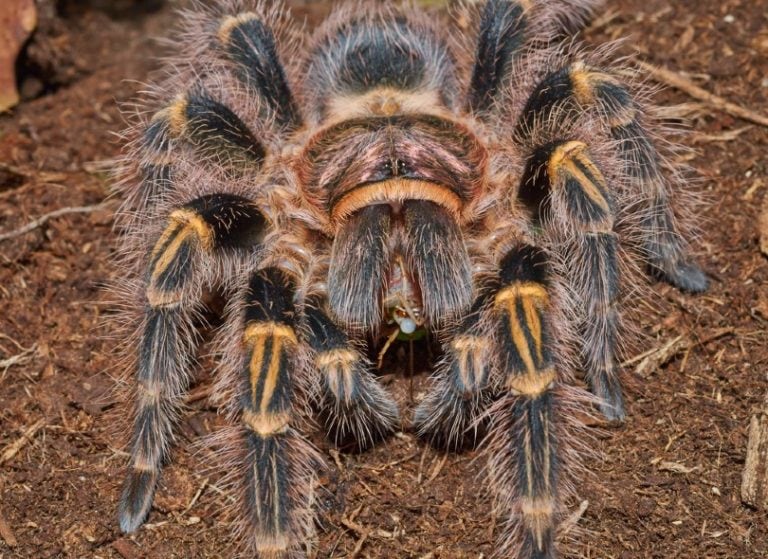
Chaco Golden Knee Tarantula Care Sheet, Lifespan & More (With Pictures) Pet Keen
1 Get a 15-gallon terrarium. Chaco gold knee tarantulas are one of the larger species of tarantula, so they need a habitat that is big enough for them to move around in. [2] You can keep it in a plastic container with small air holes, or a glass container with a screen lid, both found at many pet stores. [3] 2
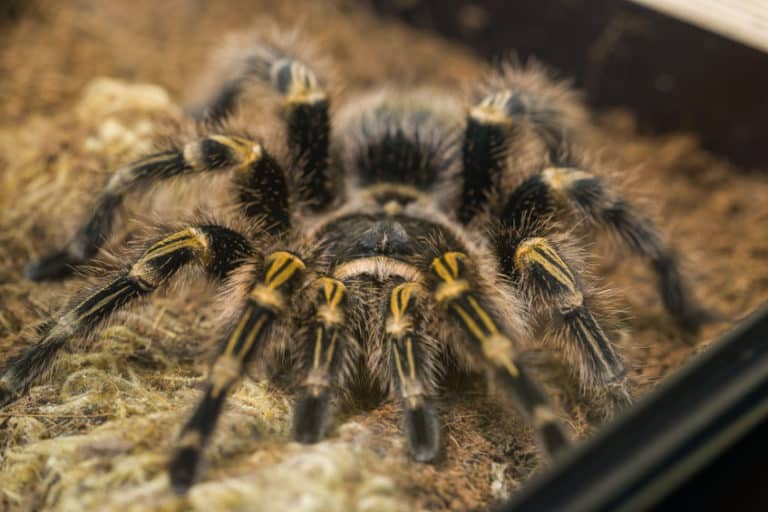
Chaco Golden Knee Tarantula Grammostola pulchripes Care Guide The Pet Savvy
Currently, in our hospital there are seven ICU with 96 beds; five (76 beds) dedicated to COVID-19 patients. In our orthopaedic department we went from, 70 to 26 beds plus 2 'grey' beds, intended as temporary stations for patients waiting for the test results. The remaining 40 beds are now dedicated to COVID-19 patients.

Chaco Golden Knee Tarantulas as Pets Lifespan, Size and Care Info Family Life Share
Formerly known as Grammostola aureostriata, Grammostola pulchripes or the Chaco golden knee tarantula is a popular beginner species. Dark in appearance with pink "hairs" and yellow striping on their knees this remarkably stunning tarantula can grow quite large for a Grammostola, I have had specimens nearly 8 inches in legspan!

Chaco golden knee tarantula, Grammostola aureostriata (Araneae Theraphosidae) 5352013
The Chaco golden knee is a very calm and docile tarantula, which, along with its striking appearance and large size, makes it an attractive pet. It frequently sits in plain view in captivity, and likes to shove substrate around, especially at young ages. Females can live for well over twenty years, while males only live for about five or six years.

Grammostola pulchripes (Chaco golden knee) Care Sheet Jamie's Tarantula Blog
The Grammostola pulchripes, known commonly as the Chaco Golden Knee Tarantula. This spider comes from the grasslands of the Gran Chaco. A beautiful, diverse,.

Chaco Golden Knee Tarantula
Chaco Golden Knee Tarantulas, also known scientifically as Grammostola pulchripes, are a species of tarantula from the family Theraphosidae. These incredible spiders are native to South America and are characterized by their golden-brown color and thick, muscular legs. The colorful "knees" of the spider are attributed to their common name.
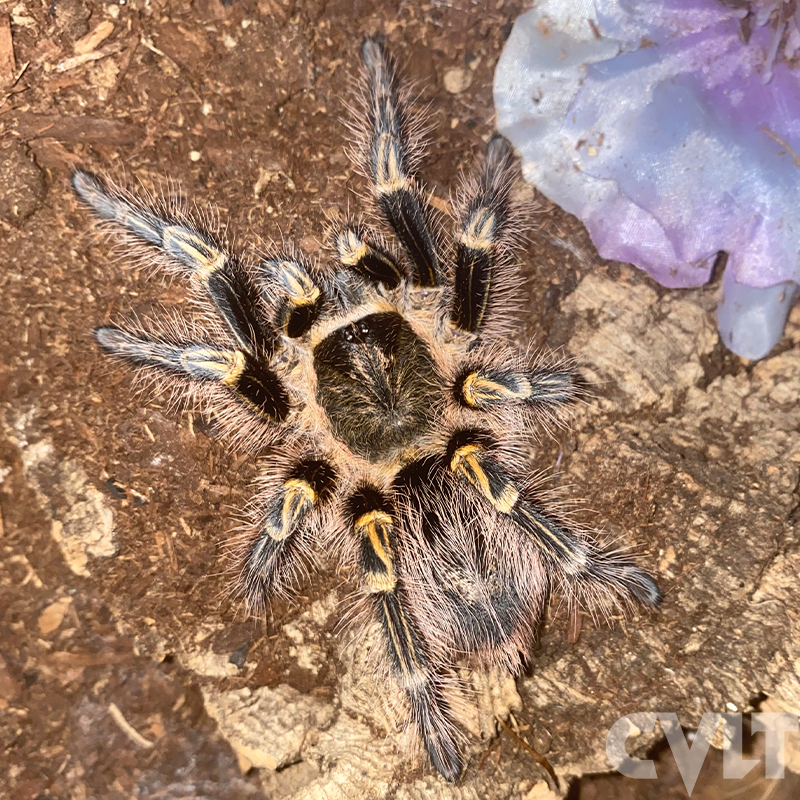
Chaco Golden Knee (Grammostola Pulchripes) Cult Exotics
Chaco Golden Knee tarantulas are a cool-looking, docile, hardy tarantula that are easy to care for. They are popular among beginners because of their laid-back nature and the fact that they will sometimes sit around in plain sight and won't hide away in their burrows all day.